The Forgotten Kaleidoscope Craze in Victorian England
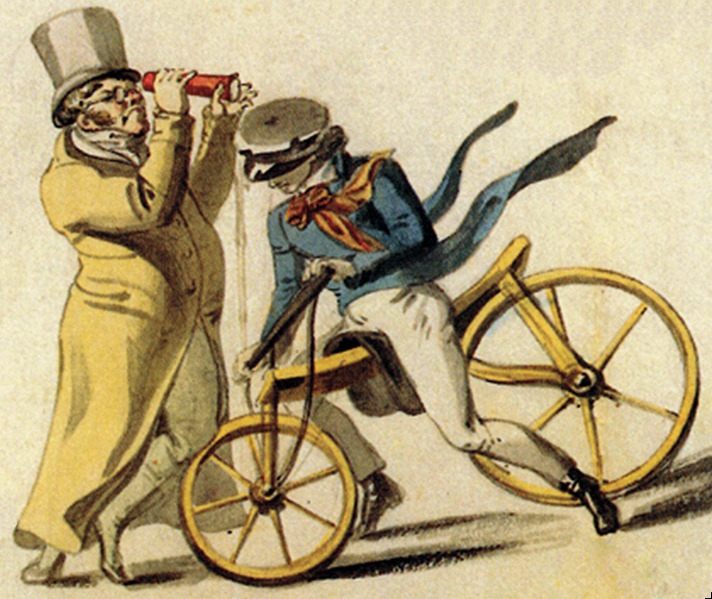
An illustration from 1818, titled “Human Nonsense.” (Photo: Public Domain/WikiCommons)
It’s hard to imagine now, but in the years after the kaleidoscope was first invented in 1816, it distracted the public as much as an iPhone. A person couldn’t walk down a street in London without seeing people staring into these tubes and walking into walls from being so immersed in the new invention.
Its presence was pervasive. If a person didn’t own a kaleidoscope, they could pay a “penny for a peek” from London’s poor or homeless, who earned a living by offering passersby a look into the patterns produced by what some termed as one of the “most important inventions and discoveries of our time.”

Art from that period chronicled how immersive the kaleidoscope experience could be. Media scholar Erkki Huhtamo describes an engraving shown at the Frankfurt Film Museum, in which several people (and even a monkey!) are shown staring into their kaleidoscopes. As Huhtamo explains it, “These ‘kaleidoscomanics’ are so mesmerized by the visions they see inside the ‘picture tube’ that they do not even notice that other men are courting their companions behind their backs.”
The kaleidoscopes we can buy today, similar to the one I grew up with in the early-1980s, are not the same objects that came onto the scene in England. My first kaleidoscope was made of yellow cardboard with multicolored polka dots. It was cheaply made and squished under my fingertips as I turned the dial. In its base, it had plastic jewels that created patterns that would saturate when pointed directly at the sun. Within a month or two, the toy went into the toy box where it sat until being thrown away.
By contrast, the kaleidoscope of the early-and mid-1800s wasn’t just a child’s toy. In fact, it wouldn’t become child’s toy for at least several decades. Instead, this new mobile device was in the hands of everyone from children to the elderly; from professors to pastors and was seen on nearly every public street in the UK where it was first invented. How this beloved device went from adult obsession to throwaway juvenilia turns out to be a long, strange journey, one that has profound implications for the mobile devices you are carrying right now.
Sir David Brewster’s Invention
The kaleidoscopes on the streets of 19th century Britain were handheld and made from a range of materials, such as tubes made of brass with embellishments of wood or leather or those cheaply made of tin. The base of the tube was typically filled with broken pieces of glass, ribbons, or other small trinkets. When Sir David Brewster submitted his patent for the kaleidoscope in 1817, he focused almost exclusively on describing its inner workings, noting in passing that these elements could be “either covered up with paper or leather or placed in a cylindrical or any other tube.”
While the object of the 19th century itself might look familiar to us today, the ways the culture valued this object were very different.
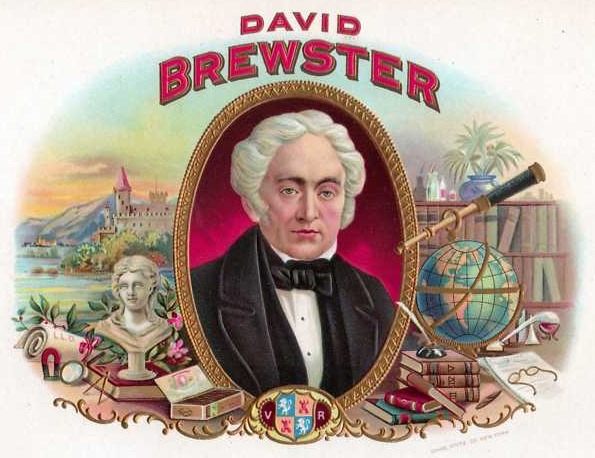
A portrait of Sir David Brewster, inventor of the kaleidoscope. (Photo: Public Domain/WikiCommons)
For scientists of the era, Sir David Brewster’s invention offered them a tool to understand how optics functioned. Two years before he invented the kaleidoscope, Brewster was conducting experiments on “the polarization of light by successive reflections between plates of glass.” For his work in this area, he was awarded the Copley Medal by the Royal Society of London.
And it was while experimenting with the relationship between optics, light, and mirrors that he began to notice that when the reflectors were inclined toward each other, they created circular patterns as the image multiplied across the surfaces.
As other scientists began working with the kaleidoscope, some found it useful as a tool to visualize massive numbers; the possible variations produced by a single kaleidoscope were unprecedented. As one writer noted, “Supposing the instrument to contain 20 small pieces of glass, etc. and that you make 10 changes in each minute, it will take the inconceivable space of 462,880,899,576 years and 860 days to go through the immense variety of changes it is capable of producing; amounting (according to our frail idea of the nature of things) to an eternity.”
In addition to scientific utility, the kaleidoscope also held aesthetic and industrial utility. The nearly-infinite varieties created by the kaleidoscope, which were produced symmetrically, were used for patterns on china, paper, carpets, floor-cloths, and other fabrics.
But it was the way that this new mobile device brought together these elements (the science of optics, industrial utility, and symmetrical beauty through a visual instrument) that captured the attention of the 19th century.
An 1819 issue of New Monthly Magazine, in listing the “most important inventions and discoveries of our times”—ranging from uses of combustible gas for illumination, uses of the newly discovered metal cadmium, advances in infrastructure and timekeeping, among others—ends its article by stating, “Lastly, no invention, perhaps, ever excited more general attention among all classes of people, than the kaleidoscope.”
What it Means to Look
A playwright and philosopher in Victorian America, R.S. Dement, recalled the moment he discovered what was inside a kaleidoscope as a child. Writing 61 years after the kaleidoscope had initially been brought to market in the UK, Dement said that he was originally fascinated by the reflections of colors bouncing around in various symmetries; but upon taking the kaleidoscope apart, he discovered nothing but “numerous pieces of colored glass, without symmetry, unsightly in themselves, have no connection with each other and but very trifling value.” He felt betrayed, “deceived into believing that what he saw was at least the shadow of something real and beautiful, when in truth it was only a delusion.”

Illustrations from Brewster’s A Treatise on the Kaleidoscopes, 1819. (Photo: Public Domain/Courtesy of HathiTrust)
By the time Dement had his childhood experience dismantling his kaleidoscope in the 1840s, it had already moved from being a cultural phenomenon on the streets to being a conversation piece in the Victorian parlor, likely sold with a stand attached. His reflections, however, match nearly word-for-word the description of the inside of a kaleidoscope written in a magazine article in an 1818 issue of Literary Panorama, right at the beginning of the kaleidoscope’s rise to popularity. The article states:
“He seizes the other end of the instrument, pours out the contents on the table, reduces the stars and ribbands to a few bits of coloured glass, declares that the mountains of gold and silver are nothing better than certain scraps of tissue paper, inscribed with magical characters; calls the most pleasing images mere spectra, visionary appearances, formed by reflection, refraction, and compound mystification of objects: in no other sense invaluable, than because they have no value—and this, sir, is the whole of the gentleman’s famous Kaleidoscope!”
Many people of the era argued that giving attention to the patterns built from such scraps was a waste of time. This was especially pronounced, they argued, when true beauty was all around. All a kaleidoscope viewer had to do was put down the instrument of false beauty and look up at real beauty in nature. Such admonitions could have easily been lifted directly from recent op-eds on our society’s use of cell phones.

A Kaleidoscope-esq pattern for wallpaper, 1856. (Photo: Public Domain/WikiCommons)
Beauty and the Eye of the Beholder
There is a long history of controversial devices that created visuals through techniques that were critiqued as second-hand beauty rather than real, “authentic” beauty. In fact, we can trace these kinds of criticisms through every single medium that was used to create some kind of representation or visual work of art.
Visual media that challenge ideas of authentic beauty also bring up the question about what scholar Nicholas Mirzoeff calls “the right to look,” (from his book by the same name), that is, what are the cultural priorities of our visual attention. Where should our eyes be directed? In what kinds of things are we allowed be immersed (nature, a religious scripture, mediation, a lover’s gaze)? What can we look at and what can we ignore?
Devices for seeing had a particular position in 19th century Britain. At this time, optical objects like the kaleidoscope (alongside a host of other instruments like the telescope, the periscope, the microscope, and emerging “philosophical toys” designed for use by the broad public to better understand scientific principals around optics and light including the phenakistiscope and zoetrope) created certain ways of seeing the world that had been impossible until this point.
These new visual tricksters fed into the fascination in the deficits of the human eye and how it could be misled. As people began understanding human vision differently because of these objects, people also began seeing the world through machines like trains, moving walkways, and steamships.
In the early-19th century during the rise of the kaleidoscope, society in the UK began to feel in “despair” about the effects of these new inventions on our bodies and the kinds of attention we were paying to an increasingly sped-up world. An 1818 article writes:
“We are in Despair! [Not because of politics; that all will pass. We see] ourselves out done — thrown into the shade, the background, by a newly found out old invention, to see all the world, instead of studying the Telescope, the Microscope, or the Periscope—all the world intent on nothing but—the Kaleidoscope. Surely, this is too bad! Every boy in the street studies his Kaleidoscope, though he bumps his head against a wall.”
Walking around public streets with one eye dedicated to a tin tube (sold by “tinmen” as they were known), likely with the other eye closed, boys were bumping their heads on walls. Attention was being diverted toward a device that was creating illusions with mirrors.
This device thus represented the fleeting attention of a population who were easily bored, fascinated by illusions, and distracted from social interactions in the public sphere.
Pirated Kaleidoscopes
Sir David Brewster patented his invention in 1817, which would normally have guaranteed him exclusive rights to produce the kaleidoscope and the ability to make legal claims against those who infringed on his intellectual property. However, kaleidoscopes were being “pirated” everywhere and Brewster seemed to have little recourse to such piracy. His patent was not correctly laid out to restrict others from producing his invention and selling their own versions. He spent many years in legal proceedings trying to recoup the lost earnings from pirated kaleidoscopes.
In a letter to his wife in 1818, he wrote that, in his travels, he met with another manufacturer who agreed to make kaleidoscopes under his patent. This was a vitally important step because he only had one manufacturer at the time, Philip Carpenter, who owned an optical and scientific tools company. Carpenter could not keep up with demand: it was estimated by Brewster that over 200,000 were sold in the three months after it was launched.
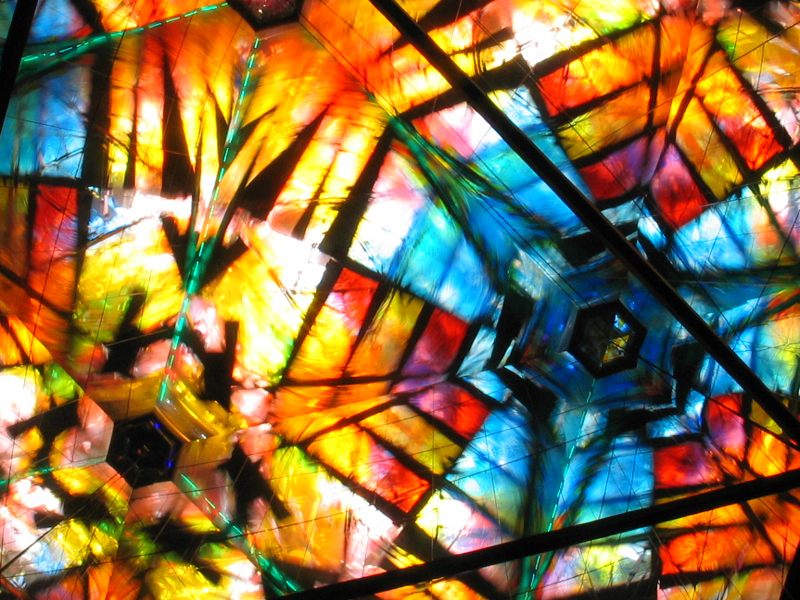
“…no invention, perhaps, ever excited more general attention among all classes of people, than the kaleidoscope”, according to an 1819 issue of New Monthly Magazine. (Photo: Rudolf Ammann/flickr)
He went on to say in a separate interview that “out of this immense number there is, perhaps, not one thousand constructed upon scientific principles.” Furthermore, Brewster wrote, the general population didn’t understand its new device: “Of the millions who have witnessed its effects, there is perhaps not one hundred who have any idea of the principles upon which it is constructed, and of the mode in which those effects are produced.”
Millions had viewed it and millions more would come. As Brewster traveled around the UK trying to gain recompense for lost proceeds from his invention, he saw the knockoff kaleidoscopes everywhere. In another letter written in 1818 to his wife he wrote:
“I dine to-morrow with the Royal Society Club, and in the evening I undergo the ceremony of being admitted a member… I called yesterday at Sir Joseph Banks’, and met Sir Everard Home, and other wise men there. Both of these gentlemen assured me that had I managed my patent rightly, I would have made one hundred thousand pounds by it! This is the universal opinion, and therefore the mortification is very great. You can form no conception of the effect which the instrument excited in London; all that you have heard falls infinitely short of the reality. No book and no instrument in the memory of man ever produced such a singular effect. They are exhibited publicly on the streets for a penny, and I had the pleasure of paying this sum yesterday; these are about two feet long and a foot wide. Infants are seen carrying them in their hands, the coachmen on their boxes are busy using them, and thousands of poor people make their bread by making and selling them.”
His wife wrote back to echo the demand that was present in their hometown in Scotland:
“[T]he public are becoming impatient and clamorous now at the delay, and [the merchant] has orders to an amount that is prodigious…
People insist on leaving their money in advance in order to secure their chance, and from six in the morning till six at night his room is beset with people. They cannot understand how completely mismanaged it has been, and that the capital of Scotland, and your place of residence, should not contain a single kaleidoscope for sale for the last eight days!”
This mania lasted for decades. But by the Victorian era during the middle and last half of the 19th century, there wasn’t a single kaleidoscope seen on the streets of London. By this time, they had all gone indoors, propped up on stands in parlors, novelties in the home. The kaleidoscope did not simply lose fashion and thus get taken up by children; instead, there was a transition point that had its seeds sown as soon as the “mania” around kaleidoscopes emerged.
From the Streets to the Parlor
Public space in early 19th century Britain was a sphere that was carved out by very particular practices, by things that were appropriate or inappropriate to do in these kinds of spaces. This was typically understood as cleanly separate from the “domestic sphere” of the home, where the expectations over what was appropriate were very different.
Many of these expectations were produced out of the ways that commerce and gender norms intersected; the public space was a sphere for business, ideas, and the flow of public life (all marked with a distinctly male connotation) while the domestic sphere of the home was a private space for family and the foundation of personal affairs (associated as female in connotation).
While in our own experiences of these spheres in the 21st century are replete with examples of how these spaces bleed over into one another in ways that make them nearly indistinguishable (such as someone having an intimate phone conversation on his or her mobile device on a train within earshot of the entire train car), these spaces were understood as very distinct when the kaleidoscope was first born.
When the kaleidoscope did emerge, it did so out in public rather than in the home. One possible reason for this is the physical nature of the instrument: it required light to function adequately, and thus people took it outdoors into the sun to get the best effect.
Additionally, there was also significant social value in taking the kaleidoscope out into the public sphere. It served as a status symbol of someone who owned the latest device that everyone was talking about. Others around the kaleidoscope owner would be interested in the instrument even if they themselves owned kaleidoscopes since no two were identical: each varied in some way due to the different elements included at the base of the tube.
Since it was portable, easy to carry with you (i.e., a mobile technology), people took it everywhere and situated themselves in the midst of the social conversations happening about “Dr. Brewster’s latest invention.”
Yet, the kaleidoscope required that the attention of its user focus on the patterns in the tube rather than the everyday life happening around the tube. It was a medium that pulled the users attention elsewhere, away from the public life on the street. There were many publications, especially in religious magazines of the era, which admonished people to put away their kaleidoscopes; to stop being satisfied with false beauty when real beauty was all around.
These articles, poems, and short stories noted that the kaleidoscope not only pulled a person away from the natural beauty of God’s creation (and thereby pulling a kaleidoscope viewer away from potential communion with God), but it also encouraged the kind of viewing that was never satisfied with what was presented.

Another popular 19th century optical device, a Phenakistoscope, in action. (Photo: JBarta/WikiCommons CC BY-SA 2.5)
The kaleidoscope thrived because of its ability to provide variance; people wanted to see what pattern would come next. Not only were these kaleidoscope viewers focused on the wrong kind of beauty, they were doing so in a way that created a mind ever eager for the next beautiful pattern.
Within a couple of decades, near the beginning of the Victorian era, there were no “penny for a peek” signs to be seen on city streets and the kaleidoscope was now sold with a stand, meant to be placed on a table in the Victorian parlor. It was a conversation piece in the home. It was less mobile than it was portable within the owner’s house. Essentially, the kaleidoscope had been “domesticated.”
By the 1870s, when Charles Bush first introduced his widely-popular kaleidoscopes in the United States, it had a crucial difference from the first kaleidoscopes—it was attached to a stand. It was no longer mobile in the ways it was in the days of “kaleidoscomania”. By World War II, the kaleidoscope was securely in the realm of children—no longer existing as a centerpiece for adult conversation—and once again was sold without a stand. Instead, they were made of cheap materials and sold among erector sets and Kewpie dolls.

A kaleidoscope on a stand, for use in the home. (Photo: Karl Gruber/WikiCommons CC BY-SA 4.0)
The first step of this domestication of a technology that threatened the use of public space is that it was diminished: detractors from very early on called it a toy. While it is obvious that the kaleidoscope was much more than a “mere toy” for early 19th century Britain, articles and editorial pieces that disparaged the kaleidoscope almost always refer to it as a “mere toy” or a “child’s plaything”
Of course, a glance around the streets of London would tell you otherwise. But its movement indoors had begun.
Domesticated Technologies
When a new medium first emerges, a few specialized users typically take it up at the beginning. These are either those who are insiders into this realm of technology (such as the handful of professors and scientists who used early versions of the internet after it was first created as a collaboration between the Department of Defense and several universities in the U.S.) or by the wealthy (as seen in the early purchasing of car phones long before the ubiquitous handheld versions became a part of our everyday lives).
In terms of everyday life, this early stage is characterized by “the shock of the new,” often accompanied by questions such as, “Why would I ever need a [insert name or function of new technology here]?” As early adoption moves to mass adoption, when a new medium becomes widely used by a larger portion of a population, the technology moves from being a shock to existing in the realm of the mundane.

(Photo: Joho345/WikiCommons CC BY 4.0)
So, on one hand, the journey of all technologies is from early adoption to mass adoption to domestication. Here, by domestication, the taming of a technology is its profound incorporation into our everyday lives so much that we don’t even notice it any longer. It is mundane.
The kaleidoscope took a similar journey; however, what sets the kaleidoscope apart is that, as a “mobile device” used in public spaces— challenging how those spaces got used—its domestication radically changed the very nature of the technology. It’s worth noting, though, that we might be seeing a reversal of movement from outside to inside with mobile phones. After all, the first telephones and computers were tethered to walls and desks. They were items whose only use was in the home or office. Now, freed from the domestic sphere, they roam everywhere.
Each time a new mobile technology is introduced to a culture, it redefines our understanding of what it means to be a social person in the world. Devices like the kaleidoscope and our iPhones are symbols of this shift. Right now, there is a lot of investment in getting us to put down our devices and experience “authentic” human connection.
This past weekend, the New York Times mailed out a million or so Google Cardboard viewers in the largest distribution of virtual reality technology to date. How even more intrusive devices like Google Cardboard or the Occulus Rift will be received by a mainstream audience remains to be seen. But it’s not just the lessons of the kaleidoscope age that linger—it’s the technology itself. Google Cardboard, a neat mostly-paper viewer into which the audience slides a smartphone, is a repackaged version of the Victorian stereoscope. Two lenses create the illusion of three-dimensional viewing. Penny for a peek, indeed.


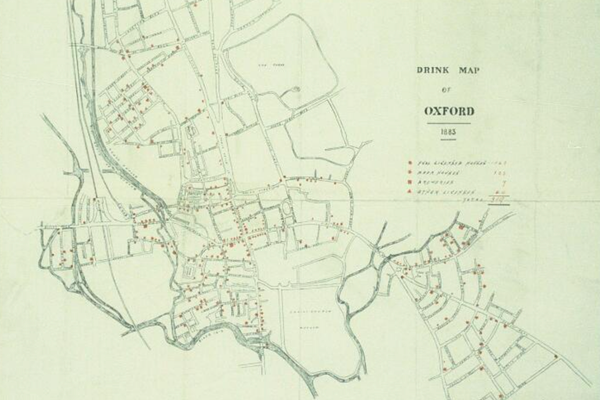

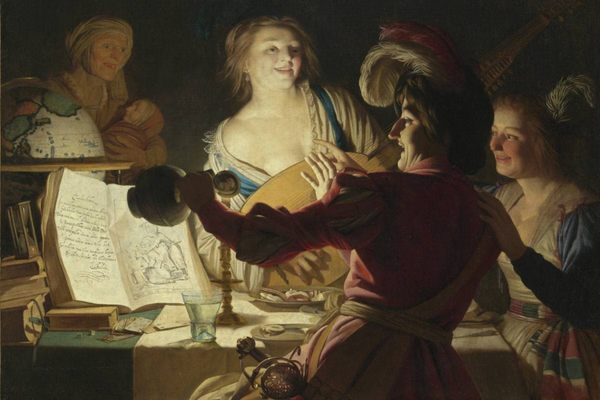
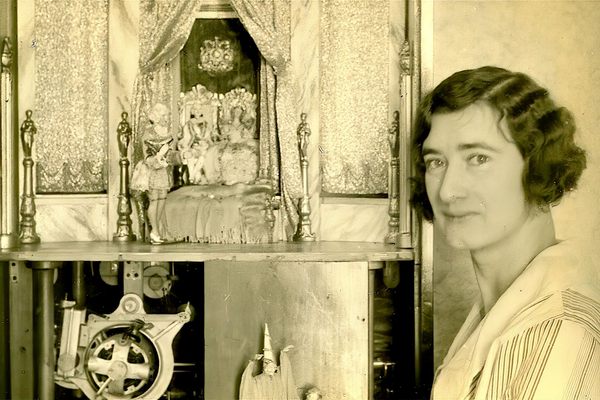


Follow us on Twitter to get the latest on the world's hidden wonders.
Like us on Facebook to get the latest on the world's hidden wonders.
Follow us on Twitter Like us on Facebook